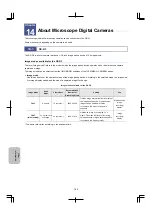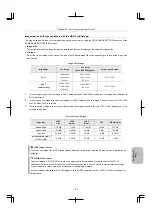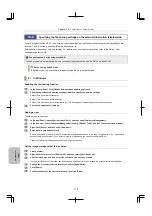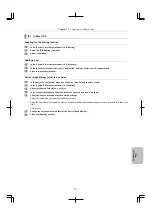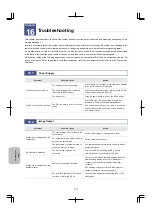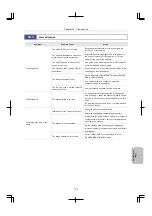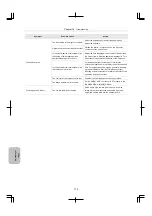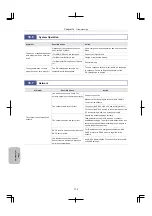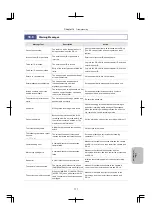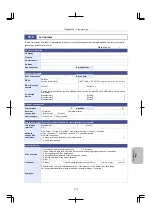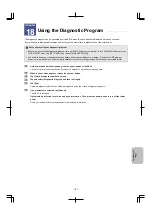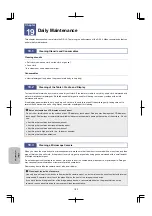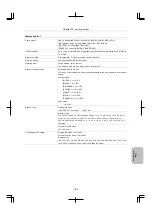
Chapter 16
Troubleshooting
173
O
ther
Informat
ion
16.3
View of Images
Symptom
Possible Cause
Action
The image blurs.
The optical device is out of focus.
Bring the optical device into focus by operating the
focus drive or focusing ring.
The aperture diaphragm is closed too
much when using the microscope.
Adjust the aperture diaphragm to 70 to 80 percent of
the numerical aperture of the objective, or 70 to 80
percent of the pupil of the objective.
The magnifying power of the optical
device is too much.
As a guide, use a magnification 500 to 1000 times the
numerical aperture of the objective.
The electronic zoom is being used for
observation.
Use of the electronic zoom may cause an image to blur
depending on the magnification.
The sharpness setting is low.
Revise the setting of [SHARPNESS] in the [CAMERA
MENU : IMAGE] window.
If an external display is connected, adjust the
sharpness setting for the display.
The DS-L4 is used in a place subject to
frequent vibration.
Use the system in a stable, vibration-free place.
The image blurs.
The exposure time is too long.
A moving subject will appear blurred if the exposure
time is too long. Change the exposure mode to shutter
priority or manual, and set the exposure time to a fast
value.
If a dark subject is difficult to focus, it is recommended
to use focus priority.
The image is too dark or too
bright.
Illumination for the subject is incorrect.
Adjust the illumination appropriately.
Adjust the surrounding illumination appropriately.
The exposure is not adequate.
In program AE or focus priority mode, perform exposure
compensation. Alternatively, set the metering area and
metering mode properly.
Set the metering area and metering mode properly.
In manual exposure, set the exposure time and camera
gain properly.
The image adjustment is incorrect.
Set the CHRM, HUE, or contrast properly in the
[CAMERA MENU: IMAGE] window.




